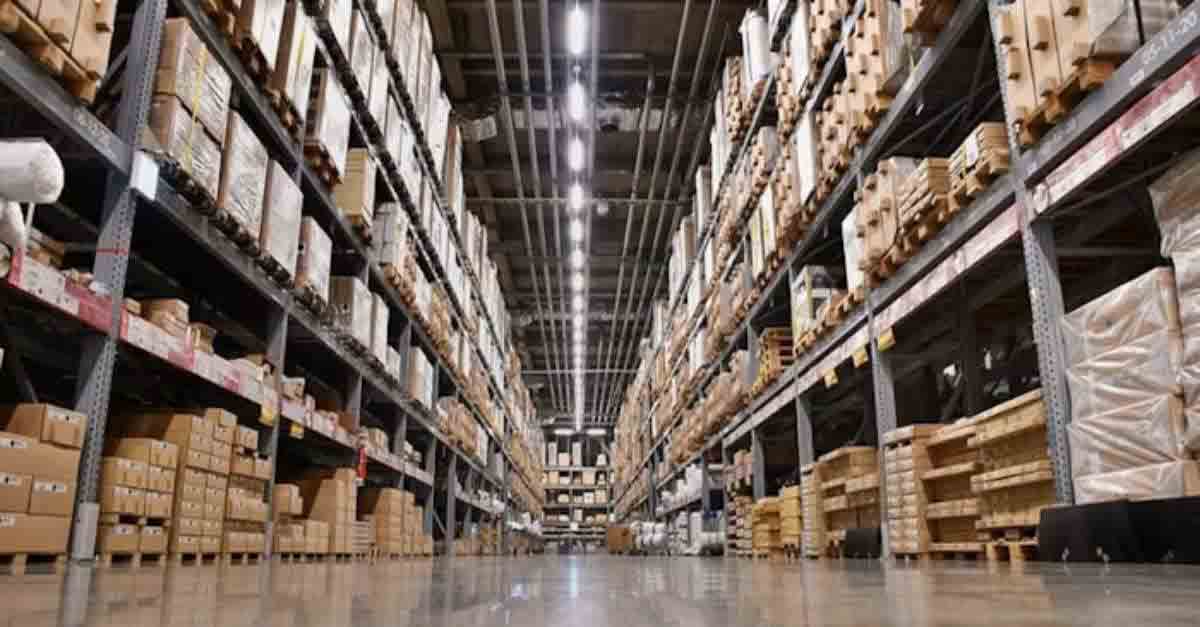
Retail Trends | Moving Distribution Centers to Storefronts
Learn how as as more customers become omni-channel consumers, it has become paramount for retailers to create seamless shopping experiences across ...
Solutions
Workplace Management Solutions
Real Estate Management Solutions
Maintenance Management Solutions
Energy Management Solutions
Engineering Document Management Solutions
Asset Management Solutions
Automate campus scheduling for classes, meetings, and exams with our EMS software.
Plan and manage conferences effortlessly with EMS software to impress guests and streamline operations.
Boost workplace flexibility and maximize space use with seamless desk and room booking.
Organize workplace or campus events smoothly, creating memorable experiences.
Optimize workspace, manage allocations efficiently, and reduce costs with our space management solutions.
Deliver projects on time and within budget by improving communication, collaboration, and efficiency with our software.
Streamline lease accounting for ASC 842, IFRS, and GASB compliance.
Manage leases efficiently by tracking key dates, analyzing costs, and ensuring compliance.
Centralize data and analytics for better insights, faster negotiations, and revenue growth.
Centralize facility and asset maintenance, automate work orders, and ensure compliance with our CMMS software.
Extend asset life, reduce downtime, and prevent costly repairs with data-driven monitoring.
Prevent equipment failures and extend asset life by detecting and addressing issues early.
Make sustainable, cost-efficient energy decisions by monitoring and optimizing power consumption.
Remotely monitor and control equipment with real-time data to predict issues, boost efficiency, and reduce downtime.
Easily share and collaborate on documents, creating a single source of truth for engineers and contractors.
Manage and analyze assets across their lifecycle to schedule maintenance, reduce downtime, and extend lifespan.
Improve visibility, automate work orders, and ensure compliance for efficient facility and asset management.
Resources
Browse our full library of resources all in one place, including webinars, whitepapers, podcast episodes, and more.
Support
Looking for access to technical support, best practices, helpful videos, or training tools? You’ve come to the right place.
About Accruent
Get the latest information on Accruent, our solutions, events, and the company at large.

The pandemic caused significant changes in shopping patterns. Learn how to best position your company to acquire and retain customers in this new environment.
With every major economic event of the past 15 years, the debate over whether retail is dead resurfaces. The pandemic has been no exception. While various subsegments of the retail industry have been affected differently since March 2020, with some getting hit harder than others, one thing that experts can agree on is that the retail landscape—and consumer expectations—will never be the same.
Here, we’ll discuss the immediate changes that the pandemic caused in shopping patterns, as well as how these changes affect brand and customer loyalty, and the type of investments retailers can make to set themselves up for success over the next several years.
During the pandemic, the retail industry experienced a decade of technological change in just a few months. Suddenly, customers were no longer comfortable buying items in store and shipping delays were ubiquitous, which raised demand for things like curbside pickup and grocery delivery. Customers also demanded a robust omnichannel shopping experience with more options and increased flexibility between modes of purchase.
An omnichannel experience itself is by no means new: the move toward omnichannel began long before the pandemic, with demand and availability of more options rising steadily over the last several years. But the pace of this shift during the pandemic was far quicker than anyone could have expected.
Overnight, retailers had to fast-forward their 5- or 10- year plans and execute new modes of operations, adding options like curbside pickup to their offerings. This breakneck shift has been far from seamless, and it’s left many retailers struggling to stay in business as they face a myriad of issues affecting profitability.
On the consumer side, the pandemic caused shoppers to rethink and shift their buying patterns overnight. For most, this meant searching for out-of-stock products wherever possible and getting them delivered by any means necessary. According to a recent McKinsey report, over 75% of consumers tried new brands, places to shop, or methods of shopping since the pandemic began. This scramble opened consumers up to new brands and familiarized them with new ways of purchasing from both new and familiar businesses.
This mass forcing of customers out of their comfort zone and away from their routine is proving to be both a blessing and a potential curse for retailers. On one hand, it has put customer loyalty up for grabs. Consumers have inadvertently discovered, for example, that they like a generic version of hand soap as much as their preferred name brand, leading them to abandon their loyalty and their repeat name brand purchases.
Across the retail industry, this shake-up in consumer behavior has left companies and brands vulnerable to losing their repeat business as they struggle to capture new customers while retaining existing ones. So how can retailers set themselves up to win?
Retailers can position themselves to come out on top by making investments that will help them deliver the right experience and win over customers.
Take grocery as an example. The age of customers being comfortable getting anything delivered means that physical proximity to a grocery store doesn’t carry as much weight as it once did. Before the pandemic, I might choose to do my weekly grocery shop from the closest grocery store to my house. This could be true for the sake of convenience, even if I would prefer the discount grocery store, if only it were closer.
Now, however, grocery delivery has become a familiar, top-of-mind option. This change has somewhat leveled the playing field in terms of physical proximity to a store, as people are more likely to get their weekly groceries delivered from their preferred stores. That said, this only works if the stores continue to keep delivery cost down and meet consumer expectations – which is why the race is on to provide the best experience at the lowest price.
One example of how a grocer is investing to meet this challenge is Ohio-based grocery chain Kroger’s new partnership with Ocado, a UK-based online supermarket known for its streamlined logistics and technology. By partnering with Ocado, Kroger aims to provide customers with the kind of on-demand convenience popularized by Amazon.
How? Well, on the front end, Ocado looks like a typical e-commerce grocery platform. The back end, on the other hand, includes a system of highly mechanized warehouses with AI-powered robots zipping around to pack groceries. Kroger’s agreement with Ocado gives them an exclusive license to Cado technology. By prioritizing innovation in warehouse logistics, Kroger is setting itself up to meet shoppers’ new, higher expectations for a streamlined and reliable shopping experience. In turn, the chain will serve as an example of how retailers can make strategic investments to capitalize on the loyalty shake-up brought on by the pandemic.
For those watching the retail industry and studying shopping behavior, it’s been a fascinating— albeit nerve-wracking— year and a half. The shake-up in shopping patterns, the forced accelerated transition to omnichannel, and resulting uncertainty in customer loyalty has opened up and shifted the competitive landscape in a way we have arguably never seen before.
Ultimately, the types of innovation and investment it will take to come out on top depends largely on the subsegment and business model. That said, companies would be wise to pay close attention to Kroger’s partnership with Ocado as an example of how to make a strategic investment that will allow them to better deliver on the customer experience and ultimately, retain and capture new customers.
Learn how as as more customers become omni-channel consumers, it has become paramount for retailers to create seamless shopping experiences across ...
Explore the top retail trends in 2024, and discover how sustainability, advanced AI, and personalized experiences are reshaping consumer expectations
The retail apocalypse has closed thousands of stores. See how to strengthen your brick-and-mortar stores through great customer experience and ...
Subscribe to stay up to date with our latest news, resources and best practices